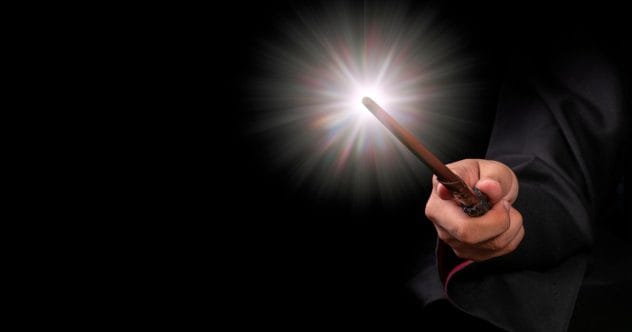Being a devoted fan of a book series that transitions to the big screen can be a bittersweet experience. The Harry Potter movies, while magical in their own right, often left book purists with a list of grievances. Translating hundreds of pages into a few hours of film inevitably means making tough choices, leading to cuts and changes. Sometimes, these alterations are for practical reasons; other times, they significantly impact the story or character arcs. Fair warning, Potterheads, we’re diving deep into the details, and spoilers abound!
Let’s explore the top 10 things the Harry Potter movie franchise didn’t quite nail when compared to J.K. Rowling’s original vision.
10. The Case of the Misidentified Snake
Right from the first film, Harry Potter and the Sorcerer’s Stone, a noticeable change occurs. Remember when Harry first discovers he can talk to snakes at the zoo? In the book, the snake Harry liberates is a boa constrictor, bred in captivity. The movie, however, features a Burmese python.
This might seem like a minor detail, but the boa constrictor’s origin story – born in captivity and never having seen its native Brazil – subtly mirrors Harry’s own trapped existence with the Dursleys. While a Burmese python still conveys the theme of a captive animal, book fans noted the specific switch immediately.
9. Voldemort’s Name: Lost in Pronunciation
The name of the Dark Lord himself, Voldemort, holds significance. J.K. Rowling, who studied French, intended a specific pronunciation. “Vol de mort” in French means “flight of death.” In French, the ‘t’ at the end of “mort” is typically silent. The early audiobooks, narrated by Jim Dale, got this right, and Rowling even confirmed this was her preferred pronunciation.
However, the movies consistently pronounce the ‘t’, making it a hard sound. This shifts the nuance of the name, a small but significant detail for those aware of its linguistic roots.
8. Harry’s Eyes: Not Quite His Mother’s
One of the most frequently repeated descriptions of Harry in the books is that he has his mother Lily’s eyes – bright green. This is a crucial detail, often reminding characters like Snape of Lily. Daniel Radcliffe, who played Harry, has blue eyes. While attempts were made for him to wear green contact lenses, he had an adverse reaction to them.
Understandably, the filmmakers prioritized the actor’s comfort and health. However, it meant a key visual characteristic tying Harry to his mother was altered, much to the chagrin of many detail-oriented fans, especially since the actress playing young Lily also didn’t have green eyes.
7. The Time Turner’s Shenanigans
Hermione’s Time Turner in Harry Potter and the Prisoner of Azkaban is a fascinating magical device that allowed her to attend multiple classes. In the books, its use is governed by strict rules, most importantly the danger of being seen by one’s past self. The consequences of altering past events are portrayed as dire.
The movie, while showcasing the Time Turner’s capabilities, seems a bit more relaxed about these rules. Harry and Hermione appear to take more risks, and the potential paradoxes aren’t explored with the same gravity. This device, while crucial for the plot, did introduce complexities that the films didn’t fully delve into before Rowling eventually had them all destroyed in Order of the Phoenix.
6. An Older Generation of Marauders (and Snape)
James and Lily Potter died in their early twenties. Their school contemporaries – Sirius Black, Remus Lupin, Peter Pettigrew, and Severus Snape – would therefore be in their early to mid-thirties during the main events of the Harry Potter series. However, the actors cast to play these pivotal roles were noticeably older.
While actors like Alan Rickman (Snape), Gary Oldman (Sirius), and David Thewlis (Lupin) delivered iconic performances, their age didn’t quite align with the characters’ ages in the books. This subtle shift could, for some, alter the perception of their experiences and the timeline of their hardships.
5. Ginny Weasley’s Diminished Fire
In the books, Ginny Weasley evolves into a powerful, witty, and popular witch. She’s a talented Quidditch player, known for her Bat-Bogey Hex, and fiercely independent. Her relationship with Harry develops organically, built on mutual respect and shared experiences. Rowling herself stated that Harry needed someone strong and his equal.
The movies, however, often portrayed Ginny as a more passive character, primarily serving as Harry’s love interest. Many of her defining moments of strength and personality were cut or downplayed, leaving movie-only fans wondering about the basis of her connection with Harry. Her fiery spirit from the books didn’t fully translate to the screen.
4. Voldemort’s Understated Death
The climax of the series, Voldemort’s final defeat, differs significantly between book and film. In Harry Potter and the Deathly Hallows, Voldemort’s own Killing Curse rebounds upon him (due to the Elder Wand’s allegiance to Harry), and he dies like any mortal man, his body hitting the floor. This mundanity underscores the theme that despite his efforts, he was ultimately human and fallible.
The movie opts for a more dramatic, visual demise. Voldemort crumbles into ash and flakes away, a cinematic but less thematically resonant end. Additionally, the book clarifies that Harry defeats Voldemort with Expelliarmus, causing Voldemort’s Avada Kedavra to backfire, while the movie shows a more direct magical duel where Harry’s spell overpowers Voldemort’s.
3. Dumbledore’s Outburst: “HARRYDIDYOUPUTYOURNAMEINTHEGOBLETOFFIRE?!”
This is perhaps one of the most memed discrepancies. In Harry Potter and the Goblet of Fire, when Harry’s name unexpectedly emerges from the Goblet, the book describes Dumbledore asking Harry, “Did you put your name into the Goblet of Fire, Harry?” calmly. This calm demeanor is characteristic of the Dumbledore portrayed by Richard Harris in the first two films and generally in the books.
Following Harris’s passing, Michael Gambon took on the role, bringing a more intense interpretation. In the film version of this scene, Dumbledore rushes at Harry, pins him against a wall, and aggressively shouts the question. This out-of-character moment for the typically serene headmaster jarred many book readers.
2. Voldemort’s Eyes: A Different Shade of Evil
When Voldemort is reborn in Goblet of Fire, the book describes him with striking red, cat-like eyes with slitted pupils, adding to his serpentine and menacing appearance. This distinct feature is often mentioned as a mark of his transformation and evil.
In the movies, Ralph Fiennes’s Voldemort has pale blue or white eyes. While his overall depiction is undeniably chilling, the decision to omit the red eyes removed a key visual descriptor from the books that made him even more inhuman and terrifying. The white eyes do offer a ghostly, eerie quality, but it’s a clear deviation.
1. Neville’s Tragic Backstory: Underplayed Trauma
Neville Longbottom’s journey from a clumsy, forgetful boy to a courageous hero is one of the most satisfying character arcs in the series. A significant part of his motivation and depth comes from the tragic fate of his parents, Frank and Alice Longbottom. They were Aurors tortured into insanity by Bellatrix Lestrange and other Death Eaters.
While the movies acknowledge this, they omit a poignant scene from Order of the Phoenix where Harry, Ron, Hermione, and Ginny accidentally encounter Neville visiting his parents at St. Mungo’s Hospital. This scene is crucial for understanding Neville’s quiet strength and the profound personal connection he has to the fight against Voldemort. Its absence in the films lessens the emotional impact of his bravery and the horrors inflicted by Voldemort’s followers.
Despite these differences, the Harry Potter films brought a beloved magical world to life for millions. They captured the essence of friendship, courage, and the battle between good and evil, even if some details strayed from the source material. For many, these changes are part of what makes discussing the books versus the movies so engaging!
What other Harry Potter movie changes bothered you the most? Leave your comment below and let us know!










